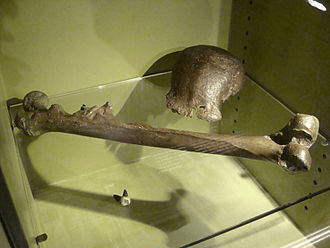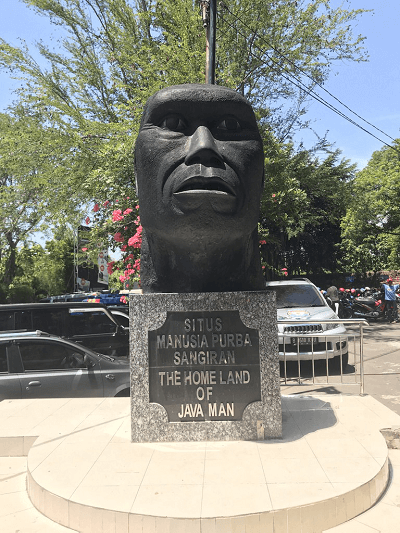Java ManJava man is the extinct member of the human lineage. Their scientific names are Homo erectus erectus and Pithecanthropus erectus. They lived in Africa and Eurasia many decades ago. Their fossils were first excavated from the island of Java. There is no specific evidence that shows when they existed; many theories say that they existed one million years ago, while some say they are about two to three million years old. Java man was the first to acquire the upright posture. They are referred to as the direct ancestors of modern humans. 
Fossil of Java man kept at a museum in Netherland In 1890 on Java island in Indonesia, the first fossils were found, which were a skullcap, a thigh bone, and three teeth. These fossils were found by Dutch anatomist and geologist Eugene Dubois. There were two other fossils found of the Java man, which comprised of the skull cap, and they both were of the same size which Dubois found in 1890. Many believed that the fossils found of the Java man were a missing link between the apes and the modern human, while according to some anatomists, the discovery of Java man supported the Charles Darwin theory. There were different views from different people as nothing else was found of the Java man apart from the skull cap, thighbone, and teeth. According to the fossils discovered, the following interpretations were made:
Eugene Dubois didn't allow any other scientist to examine the skullcap and the modern-looking femur for more than thirty years. In 1940 when Dubois died, his notes were recovered, and he wrote in his notes that the Java man might be a primitive creature that resembled more like an ape than a human, while some say that the Java man was just a hoax. Earlier in the twentieth century, after the discovery of Java, it was said that modern humans evolved in Asia but this fact contradicted with Darwin's theory which stated that humans first evolved in Africa. However, later the fossils found in Africa verified that humans first existed in Asia. It is now said that the Java man is nothing else but a descendant of the early Homo species. Characteristics of the Java Man
Discovery of Java man and the Sangiran early man site
Sangiran (Early Man Site) Sangiran is located in central Java, Indonesia is a peaceful rural area. This land emerged from the sea around 2000 years ago. Many fossils have been found here, including the fossil of the Java man. In the nineteenth century, a Dutchman came to Java; his name was Eugene Dubois. He was searching for unusually large bone, which was rumored to be discovered in this area. Several decades earlier, Darwin's book on the origin of the species was published in which he stated that 'humans have evolved from the apes'. Since many fossils have been found in Indonesia, Dubois believed that he, too, would find a fossil that connected humans and apes. He found fossils and immediately wrote an article about them and named them Pithecanthropus erectus (standing apeman). His discovery received some attention, but it was recognized when fossils of the Peking man were found in China. Later, many excavation teams came to the Sangiran site searching for more fossils of the Java man but could not find much. Research has found that its brain size was twice as large as a chimpanzee, two-third of the size of the human brain. To date, every year number of fossils are found on the land of Sangiran. This place has a long history of fossils.
Next TopicJava Sea
|
 For Videos Join Our Youtube Channel: Join Now
For Videos Join Our Youtube Channel: Join Now
Feedback
- Send your Feedback to [email protected]
Help Others, Please Share









